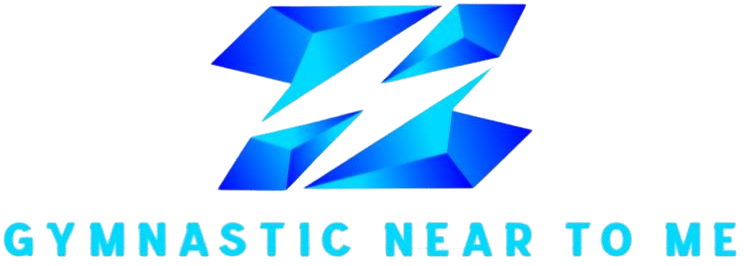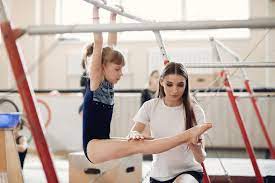Gymnastics might be all flips, jumps, and handstands on the surface—but underneath, it’s a powerhouse for brain development. When children engage in gymnastics, they’re not only building physical skills—they’re also sharpening focus, improving memory, and boosting problem-solving.
In short, gymnastics for kids does more than train the body. It actively supports cognitive growth in a way that’s fun, practical, and engaging.
In this article, we’ll explore the direct connection between gymnastics and brain development, backed by insights into how movement shapes the learning brain—and how this foundation benefits children across school, sport, and everyday life.
Why Movement Matters for the Brain
The connection between physical activity and cognitive function is well documented. When kids move, their brains release neurotransmitters like dopamine and serotonin, which help with mood regulation, memory retention, and concentration.
According to Harvard Health, regular physical activity boosts brain performance by improving blood flow and stimulating brain cell growth. This holds especially true for structured, skill-based activities like gymnastics.
Unlike general free play, gymnastics involves deliberate movement patterns. This challenges the brain to coordinate:
- Balance
- Timing
- Muscle control
- Spatial orientation
These activities stimulate the cerebellum and frontal cortex—areas responsible for attention, planning, and problem-solving. The result? Better thinkers, not just better movers.
Gymnastics Builds Attention and Focus
Gymnastics classes are filled with moments where children must stop, watch, and listen. Whether it’s waiting for their turn on the beam or following a multi-step instruction for a tumbling sequence, gymnasts develop strong listening and focusing skills.
In every class, kids are practising:
- Selective attention: tuning in to specific instructions and blocking out distractions
- Sustained focus: holding attention through longer activities
- Impulse control: waiting their turn, following the order, avoiding rushing
These are executive functioning skills—the same ones children need for reading, maths, and classroom tasks. With consistent participation in gymnastics for kids, many parents and teachers notice improvements in behaviour and task completion at school.
Sequencing and Memory in Motion
A gymnastics sequence might look like this: jump onto the springboard, land on both feet, step onto the beam, hold a pose, dismount.
That’s more than a physical routine—it’s a memory challenge.
To complete it, a child must:
- Hear and recall multiple instructions
- Hold the sequence in their mind while moving
- Make corrections on the fly if something goes wrong
- Link one skill to the next
These tasks build working memory and mental flexibility—two cornerstones of learning success. In a school setting, that same mental sequencing helps with spelling patterns, sentence construction, and solving multi-step maths problems.
It’s no surprise that kids who regularly do gymnastics often find it easier to stay organised and process information quickly.
Problem-Solving Through Movement
Every gymnastics skill poses a question: How do I get my body from point A to point B safely and efficiently?
Children are constantly assessing:
- “How do I adjust to land properly?”
- “Where do I place my hands for this roll?”
- “How do I recover my balance if I wobble?”
These in-the-moment decisions encourage adaptive thinking. Rather than relying on memorised responses, kids develop situational awareness and fast problem-solving.
It’s a skill that transfers into sport, academics, and even social interactions—because life often calls for quick thinking and self-adjustment.
As children grow, their ability to transfer these gymnastics-learned habits into other activities becomes clearer—like in team settings such as gymnastics for kids or more structured games like tape ball indoor cricket, which rely on fast reaction time and body coordination.
Building the Learning Mindset
In gymnastics, children quickly learn that skills take time to master. They may fall, miss a step, or lose their balance. But they also learn to get up, try again, and track their progress.
This helps build what psychologists call a “growth mindset.”
Kids discover that:
- Failure isn’t final—it’s part of learning
- Effort leads to progress
- Feedback is helpful, not scary
- Trying is more important than being perfect
This mindset carries over into the classroom, where children feel more comfortable tackling challenging tasks, persisting through difficulty, and viewing learning as a process—not a test.
The discipline learned through gymnastics for kids—the repetition, self-assessment, and goal-setting—is exactly what sets the stage for academic success.
Story Time: How Gymnastics Helped Maya Focus
Maya, aged 6, struggled with focus in her first year of school. Her teacher noted that she was bright but easily distracted and often left tasks unfinished.
Her parents enrolled her in a weekly recreational gymnastics class. At first, she was hesitant—but soon, she started talking about holding balances and remembering routines.
Three months later, Maya’s teacher noticed she could sit longer during group activities, follow through with assignments, and even help her classmates stay on track.
Her parents credit gymnastics for helping her build the attention span and self-regulation she needed to succeed in the classroom.
And later, Maya also joined tape ball indoor cricket—another structured but social activity that let her apply the confidence and control she had built on the mat.
Cognitive Benefits Beyond the Mat
Let’s summarise the key cognitive gains gymnastics offers children:
| Cognitive Skill | Gymnastics Activity Example |
|---|---|
| Focus and attention | Following a coach’s sequence on the beam |
| Working memory | Remembering and performing movement chains |
| Spatial awareness | Navigating obstacle courses and floor work |
| Impulse control | Waiting turn and holding position |
| Problem-solving | Adapting movements when balance is lost |
| Growth mindset | Learning from mistakes and persevering |
These skills are useful in every area of life—from homework to group projects, from playground play to family routines.
Final Word: A Smart Start for Growing Minds
Gymnastics is more than a sport—it’s a developmental tool that strengthens both body and brain.
When kids participate in gymnastics for kids, they’re not just becoming more coordinated. They’re training their minds to focus, adapt, remember, and learn through movement.
These benefits show up in school, in friendships, and in other sports like tape ball indoor cricket, where reaction time, teamwork, and attention are key.
The earlier children start, the more they gain—not just in strength or flexibility, but in the mental tools that power lifelong learning.
So, if you’re looking for an activity that nurtures a healthy body and a sharper mind, gymnastics is a leap in the right direction.

